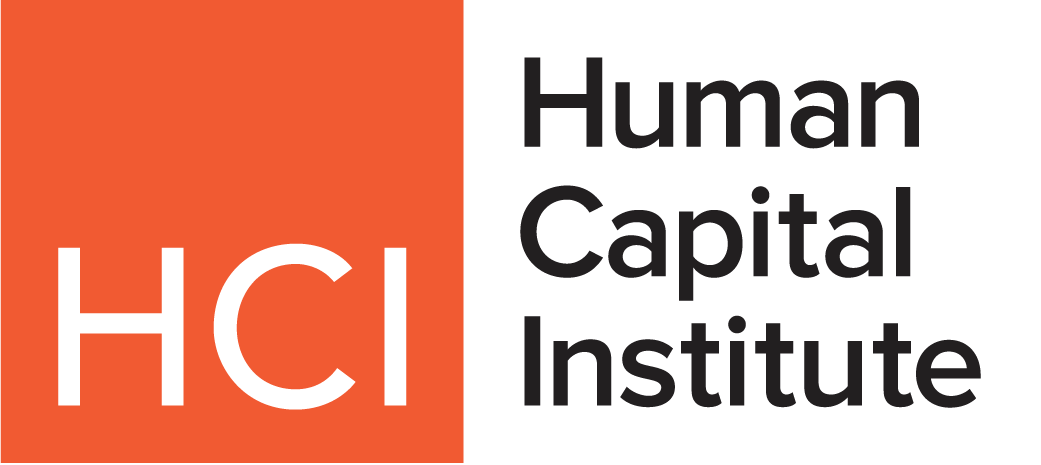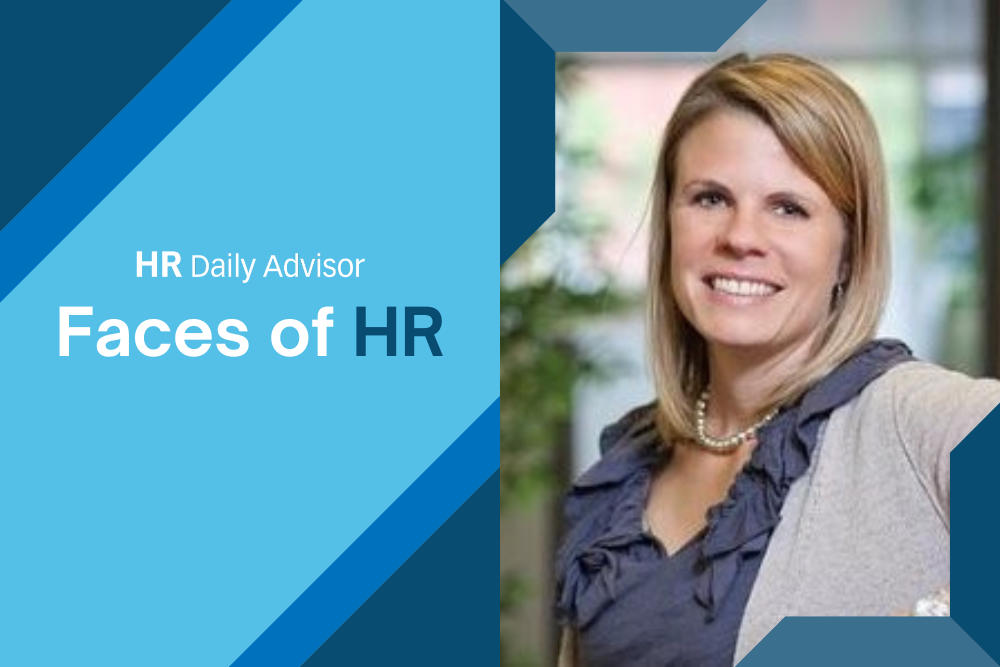Jackie Dube’s journey into HR began with a simple belief: that people are the most important part of any business. But her approach wasn’t always as nuanced as it is today. While her early career focused on traditional hiring criteria—degrees, years of experience, and hard skills—a pivotal experience fundamentally reshaped her thinking.
That shift took place during her time at ShapeUp, where Mike Zani, now The Predictive Index’s CEO, brought her on as the company’s first strategic people leader. From day one, the mandate was clear: build the right culture.
To do this, they became incredibly intentional about every hire, looking beyond the résumé to find people who were hungry, curious, and behaviorally aligned with their goals. This focus on potential and fit over credentials became the core of Jackie’s philosophy, and it’s a belief she’s carried into her work at The Predictive Index (PI).
In an age of endless résumés and standardized interviews, Dube’s story is a powerful reminder that the best talent often lies in a person’s potential and their alignment with your values, not just their list of past accomplishments.
In our latest Faces, meet Jackie Dube.
Who is/was your biggest influence in the industry?
I’ve been lucky to have several incredible mentors and influences throughout my career, but if I had to name one, it’s Mike Zani, our CEO at The Predictive Index. Working alongside Mike over the years has fundamentally shaped how I think about leadership, talent, and business strategy. He’s the one who taught me that HR doesn’t just support the business — it drives it. He taught me that people decisions are business decisions, and if you want to build a company that lasts, you better get obsessive about culture and talent. Mike never put HR in a box. He invited it into every strategic conversation, challenged me to think bigger, and trusted me to help shape the company’s future. That kind of partnership is rare, and it pushed me to evolve from a VP into a true business partner in the C-suite.
What’s your best mistake and what did you learn from it?
Early in my leadership career, I made the mistake of trying to protect someone from consequences they didn’t ask me to protect them from. It was a childcare setting, and a teacher, who also happened to be a parent, was assigned to a playground duty where her own child was present. An incident occurred, and it resulted in her termination. The hard truth? While her actions warranted the outcome, we had put her in a position she never should have been in to begin with. We failed her with our policies.
What made it my “best” mistake is that it changed how I lead forever. I stopped assuming that protecting people meant shielding them. Instead, I learned that real leadership is about building systems and structures that prevent failure, not just reacting to it. It taught me to design policies that empower people and protect them at the same time. And it reminded me that as a people leader, my job isn’t only to manage risk but to create environments where people can thrive without being set up to fail.
What’s your favorite part about working in the industry? What’s your least favorite part, and how would you change it?
My favorite part is watching people thrive when they find the right fit — behaviorally, culturally, the whole package. There’s this moment when someone clicks into a role that really aligns with who they are and suddenly they exceed everyone’s expectations, including their own. We see it all the time at PI when we move people across different functions based on their behavioral strengths rather than just their experience.
What would I change? Too many organizations are still stuck in this checkbox mentality. They need someone with exactly five years of this specific experience, this degree, these certifications. It’s so limiting. We’re missing out on incredible talent because we’re not looking at the whole person. We limit ourselves when we ignore behavioral fit or overlook the potential for internal mobility. I’d love to see more companies embrace the idea of ‘tours of duty,’ hiring someone for one chapter, and then empowering them to write their potential and curiosity, let them prove themselves in one area, then give them opportunities to grow into something completely different within the organization. That flexibility benefits everyone.
It sounds like through your experience, you really care about people, and you want to help them feel safe and comfortable, which is important in the industry. Please elaborate here.
Absolutely. Creating an environment where people feel safe, valued and heard isn’t just the “nice” thing to do; it drives business results. When people don’t feel safe having honest conversations, you get these extreme workarounds like resignation-by-proxy services. That’s a massive failure on our part as leaders.
At PI, we’ve learned that safety has to be intentionally built into your systems. Our Pioneer Advisory Council gives employees a structured voice in decisions that affect them. When people feel heard and valued, they don’t need to ghost their way out the door. We’re losing valuable insight because people don’t feel safe being honest, and that hurts both employee experience and business results. That’s why inclusion programs are so important. They help build systems and relationships that empower people to speak up, take risks, and feel safe enough to be their full selves at work.
How can company leaders make HR a value within their organization?
Leaders need to stop thinking of HR as the department that handles benefits and compliance and start seeing us as business partners who understand how talent drives results. At PI, we’ve seen firsthand how behavioral data can elevate hiring from a transactional process to a strategic advantage. But for that transformation to stick, there has to be alignment across the entire C-suite. HR can’t do it alone. It takes buy-in from every leader to build a culture where talent is treated as a business lever.
The other piece to prove HR’s value is through measurement. We track things like engagement scores and trust in leadership because those directly impact retention and performance. When I can show the executive team that our approach to hiring and development is contributing to revenue growth or helping us avoid costly turnover, that’s when HR gets a seat at the table.
Where do you see the industry heading in five years? Or are you seeing any current trends?
I think we’re heading toward this interesting tension between technology and human connection. AI will play a growing role in hiring and talent management, but the companies that succeed will be the ones that use it to enhance human decision-making while staying focused on what matters most — creating better experiences for both customers and employees. The key is using AI as a tool for innovation and continuous learning, not as a replacement for the human insights that drive real business value. Behavioral data helps managers understand how people work best, so they can lead with more empathy and create environments where everyone can thrive.
While technology helps us identify patterns and reduce bias, managers still need to understand their people as individuals. However, we’re seeing a deeper disconnect with Gen Z in the workplace. They’re often miscategorized as “difficult” and “burnt out” when they’re deeply misunderstood. They value feedback that reflects who they are, not one-size-fits-all coaching that misses the mark. If we don’t adjust how we engage and develop this generation, we risk losing them to distrust and disengagement.
And let’s not ignore the rise of “resignation by proxy.” When employees would rather pay someone else to quit for them, it signals a serious breakdown in workplace communication and psychological safety. We have to reimagine offboarding with the same care we give onboarding.
What are you most proud of?
I’m most proud of building a people function that has grown with the business without ever losing sight of the people in it. Over the past 10 years, The Predictive Index has grown from 38 employees to nearly 300. We’ve navigated hypergrowth, a pandemic, RIFs, restructurings, product launches, leadership changes — you name it. And through it all, we stayed true to a culture that values trust, transparency, and treating people like adults.
I’m proud that HR at PI isn’t seen as a back-office function or policy police. It’s a strategic driver of business success. I’m proud that our employees know they can bring their whole selves to work and that we’ve built systems that genuinely support that. But most of all, I’m proud that when tough moments come — and they always do — our team leads with empathy and clarity. We don’t shy away from hard conversations. We lean in, together. That’s the kind of culture I’m proud to help build every single day.
Do you have any advice for people entering the profession?
Get curious about the business side and really understand how your company makes money, what the challenges are and how talent decisions impact results. Too many HR people stay in their lane and wonder why they’re not included in strategic conversations. If you want to be seen as a business partner, you have to think like one.
And honestly, throw out everything you learned about hiring based on resumes and checklists. Some of our best people at PI didn’t have the “right” background on paper, but they were curious, adaptable, and aligned with our values. Learn to spot potential over perfection. That shift in thinking will make you so much more effective and will help your company build stronger teams.





